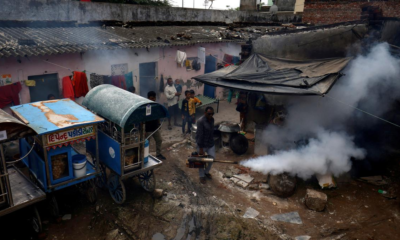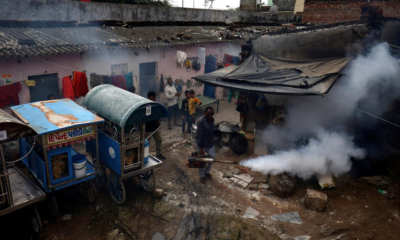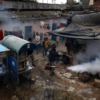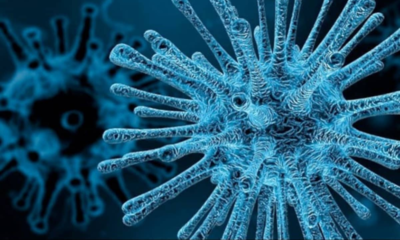Chandipura Virus Gujarat: As many as 50 cases of Chandipura virus have been reported in the entire state, and 16 people have lost their lives from the suspected virus, said Gujarat Health Minister Rushikesh Patel.
He said that 14 cases of Chandipura virus have been reported in Himmatpur, out of which seven patients have been admitted. “Three cases of the Chandipura virus have come from other states. 50 cases of Chandipura virus have been reported in the entire state, and 16 people have lost their lives,” Patel added.
Dissemination of Information and Preventive Measures:
Patel further said that information regarding this has been disseminated in every village and Community Health Center. The Chief Minister has also met with collectors, the Chief District Health Officer (CDHO), and medical colleges.
“In Gujarat, symptoms of Chandipura virus were found in kids, which caused some scare. Seven cases were sent to Pune for lab testing, of which only one Chandipura virus was found.
Only the Chandipura virus is not responsible for all the symptoms, such as swelling and diarrhea. This can also be due to encephalitis. Important information regarding the virus has been circulated in the entire state,” he said.
Gujarat CM Reviews Situation:
Earlier, Chief Minister Bhupendra Patel reviewed the situation in the state amid the Chandipura virus and assessed the measures taken to control the epidemic.
The Information Department of Gujarat stated that Gujarat Health Minister Rishikesh Patel and other senior officials also participated in the meeting.
CM Patel interacted with the State Municipal Commissioners, District Collectors, District Development Officers, and Chief District Health Officers via video conferencing to review their district performance.
Measures for Prevention and Treatment:
The Chief Minister directed the officials to campaign to spray Malathion powder in the districts to prevent the disease. He also asked the officials to ensure immediate and intensive treatment for patients with any kind of fever.
Gujarat Health Minister Hrishikesh Patel suggested measures to be taken in rural areas by grassroots-level workers, such as Asha workers, Anganwadi workers, and nurses, to prevent the epidemic. Many districts in Gujarat have reported suspected cases of Chandipura virus infection.
Understanding Chandipura Virus:
What is the Chandipura Virus? Chandipura Vesiculovirus, often called Chandipura virus (CHPV), is a member of the Rhabdoviridae family. First identified in 1965 in the Chandipura district of Maharashtra, India, this virus is primarily known for causing acute encephalitis, a severe brain inflammation, especially in children.
Vectors like mosquitoes, ticks, and sand flies primarily transmit the Chandipura virus. The infection spreads when these infected vectors bite humans, injecting the virus into their bloodstream. Other possible modes of transmission, though less common, include contact with bodily fluids from an infected person or animal.
Symptoms and Impact: The symptoms of Chandipura virus infection typically appear suddenly and can escalate quickly. Common symptoms include high fever, headache, and vomiting. In severe cases, patients may fall into a coma. The infection primarily affects children and can progress rapidly, making early detection and treatment crucial.
Get all the latest news on Indian daily post






































